Winter Crocus
The modern Crocus chrysanthus clones which are becoming ever more readily available to Australian gardeners are on the most part hybrids between C. chrysanthus and C.biflora. Both species have a widespread distribution in the wild although they rarely overlap. C. chrysanthus ranges from Yugoslavia through the Balkans into Greece and Turkey. The various forms of C. biflorus can be found from Italy through to Turkey but usually growing in different ecosystems to C. chrysanthus.
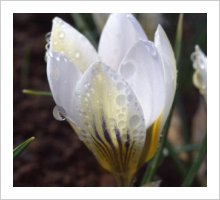 |
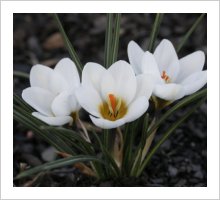 |
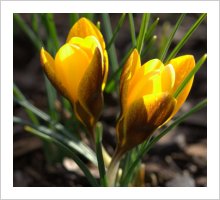 |
|
Crocus chrysanthus 'Snow Bunting' |
Crocus chrysanthus 'Ard Schenk' |
Crocus chrysanthus 'Zwanenberg Bronze' |
During the first part of the 20th century the great English gardener, E.A. Bowles, raised many good hybrids which he named after birds of the British countryside. ‘Snow Bunting’ was one of these and it does very well here at Lambley. As you would expect good work was done by Dutch bulb growers too. ‘Zwaneburg Bronze’ is a good example.
In latter years Janis Ruksans, whose book “Crocuses” is a must for any bulb lover (Florilegium book shop stocks it www.florilegium.com.au ), has made some fine selections but sadly I haven’t got any of them yet.
All of these bulbs are easy to accommodate. They do well here planted in a sunny bed where I also have a tapestry planting of low growing or prostrate perennials such as Aethionema, Thymus, Origanum and Artemisia pedemontana. This part of the garden is rarely watered.
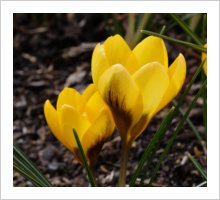 |
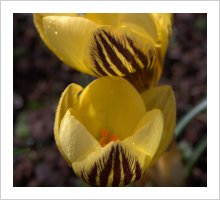 |
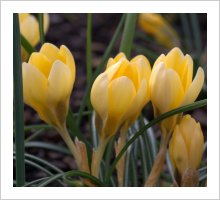 |
|
Crocus chrysanthus 'E.P. Bowles' |
Crocus chrysanthus 'Gypsy Girl' |
Crocus chrysanthus 'E.A. Bowles' |
I grow several forms of the Greek Crocus sieberi. ‘Firefly’ I’ve had for nearly forty years and it’s increased well in the dry garden for more than a dozen years. Sadly it doesn’t self sow therefore the only way to expand the patch is by lifting, dividing and replanting the bulbs whilst they’re in growth. The best forms of Crocus sieberi forma tricolor are found on Mt Chelmos and Mt Ziria in the North Peloponnese. Last spring a customer of mine told me that his parents had originally come from a mountain village in the area. He asked them if they had seen this crocus in the wild. “Yes! We used to collect lots of the bulbs. They were really good to eat.”. It’s not much different from when I was young and used to eat the tubers of Lady’s Smock or Cuckoo Flower which grew in meadows around my village.
‘Bowles White’ is a superb white flowered form of Crocus sieberi.
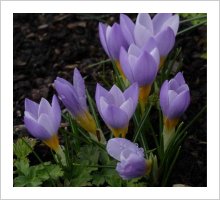 |
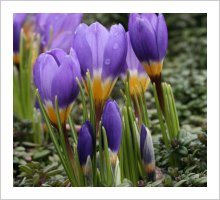 |
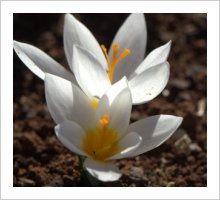 |
|
Crocus sieberi ssp. atticus 'Firefly' |
Crocus sieberi f tricolor |
Crocus sieberi 'Bowles White' |
Crocus tommasinianus, a native of Southern Yugoslavia, southern Hungary and north western Bulgaria, is the most obliging of all the Crocus in the garden, self sowing freely here and making large drifts. All the forms are lovely but especially so is the starry, pink flowered ‘Roseus’.
These Crocus are happy in any well drained spot which will get at least six hours of full light during winter. I plant them 8-10 cm deep. Flowering as they do in the depths of winter Crocus protect their vital organs from the rain by remaining tightly closed during bad weather but at the first sign of the sun or even on a mild spell on a cloudy day the flowers open and give any gardener, with eyes to see and a heart to feel, so much joy.
 |
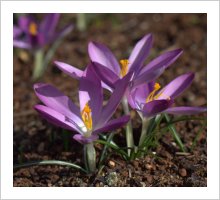 |
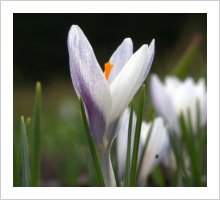 |
|
Crocus tommasinianus |
Crocus tommasinianus 'Roseus' |
Crocus biflorus ssp weldenii 'Fairy’ |